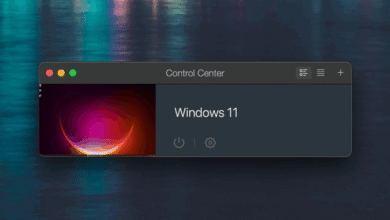Unbelievable! Windows 11’s Latest Build Now Includes a Self-Repairing Feature!

New Windows 11 Build Introduces Self-Healing Quick Machine Recovery Feature
In the fast-paced world of technology, Microsoft has continued its commitment to enhancing the Windows operating system experience. The latest Windows 11 build has introduced an impressive new feature aimed at improving system reliability and user experience: the Self-Healing Quick Machine Recovery Feature. This innovative tool is designed to automatically diagnose and fix common software issues, significantly reducing downtime and improving overall system performance. In this blog post, we will delve into the specifics of this new feature, how it operates, its benefits for users, and what it means for the future of Windows 11.
Understanding the Self-Healing Quick Machine Recovery Feature
The Self-Healing Quick Machine Recovery Feature is a groundbreaking addition to Windows 11 that leverages advanced technologies to provide a seamless recovery experience. By identifying system issues before they escalate into significant problems, this feature allows users to continue their work with minimal interruption. But how does this self-healing mechanism function?
At its core, this feature operates through a combination of machine learning algorithms and proactive monitoring mechanisms. It continuously analyzes system health, detects anomalies in the operating environment, and intervenes when potential issues arise. The AI-driven approach ensures that most common glitches or failures are foreseen and rectified without requiring extensive user input.
Key Components of the Self-Healing Mechanism
The self-healing mechanism is integrated into the operating system’s core, allowing it to provide real-time updates and fixes. Here are some of the key components that contribute to its functionality:
- Real-time Monitoring: The system continuously tracks performance metrics and system health indicators. This means that if a potential issue surfaces, the system can act immediately to mitigate risk.
- Automated Troubleshooting: The Quick Machine Recovery Feature utilizes a robust set of diagnostic tools that diagnose errors and initiate automatic repairs. This means that you will spend less time troubleshooting and more time using your device effectively.
- User-Friendly Restoration: In a case of critical failure, this feature provides easy restoration options, guiding users through simple recovery processes. This reduces the need for technical support and empowers users to manage their devices confidently.
Enhancing User Experience with Automated Recovery
With the advent of such innovative solutions, the user experience has been significantly enhanced. Here are some of the core benefits this feature provides:
- Reduced Downtime: By facilitating quick recovery and automated troubleshooting, users spend less time dealing with outages. This is especially beneficial for businesses that rely on operational efficiency.
- Increased Security: Often, system crashes and issues can pose security risks. The self-healing feature mitigates these risks by not only fixing problems but also closing security vulnerabilities as they are detected.
- Confidence in System Stability: Knowing that the system can automatically heal itself provides a significant boost in user confidence. Users can engage in more intensive tasks without the fear of sudden malfunctions disturbing their workflow.
Technical Aspects Behind the Feature
While the user experience is essential, the technology that empowers the Self-Healing Quick Machine Recovery Feature is equally intriguing. The underlying technology utilizes several advanced techniques:
- Machine Learning: By employing machine learning algorithms, the feature can adapt to individual user patterns, leading to more accurate predictions when analyzing system health and performance.
- Cloud Integration: The feature has potential integration with Microsoft’s cloud services, enabling periodic updates and improvements to the recovery algorithms based on data collected from a broader user base.
- Resource Management: The system is designed to allocate resources smartly during the recovery process, ensuring that the operating system does not compromise overall performance while performing repairs.
Setting Up the Feature
For users eager to take full advantage of this innovative feature, setting it up is quite straightforward. As part of the latest Windows 11 build, most users will find the feature automatically activated during the installation process. However, for those who wish to customize their settings, here’s a quick guide:
- Open the Settings app from the start menu.
- Navigate to the System tab.
- Select Recovery to find recovery options.
- Turn on the Self-Healing Recovery feature if it isn’t already activated.
- Customize any specific preferences regarding notifications and automatic recovery options.
Looking Ahead: What This Means for Windows Users
The introduction of the Self-Healing Quick Machine Recovery Feature has far-reaching implications for Windows users. As Microsoft continues to emphasize system reliability, this feature marks a significant step towards a more resilient operating system. Here are a few thoughts on what this means for the distant future of Windows:
- Continual Improvement: The confirmation of this feature indicates Microsoft’s dedication to continuous improvement, embracing new technologies to create a more user-centric operating experience.
- Expanding Self-Healing Capabilities: As AI and machine learning evolve, we can expect further developments in automated recovery processes, pushing the boundaries of what users can achieve without technical intervention.
- Greater Accessibility: Simplifying recovery processes opens up technology to a broader audience, making it manageable for users of all skill levels.
Conclusion
The evolution of the Windows operating system continues with the introduction of the Self-Healing Quick Machine Recovery Feature in Windows 11. This feature encapsulates the future of personal computing, where technology can autonomously resolve complications, thereby improving user experience and reducing operational interruptions. As users begin to engage with this feature, it marks yet another step in the journey of innovation that has defined Microsoft’s ethos. The strategy of combining machine learning, automated recovery and proactive issue management is exciting and reflects the potential for even more advanced features in the future.
Summary
- The Self-Healing Quick Machine Recovery Feature is a new addition to Windows 11 aimed at enhancing system reliability.
- The feature uses machine learning and automated troubleshooting to diagnose and fix issues in real-time.
- Key benefits include reduced downtime, increased security, and improved user confidence in system stability.
- Setting up the feature is straightforward via the Windows Settings app.
- The future of Windows applications points toward continued advancements in automated and self-healing technology.





